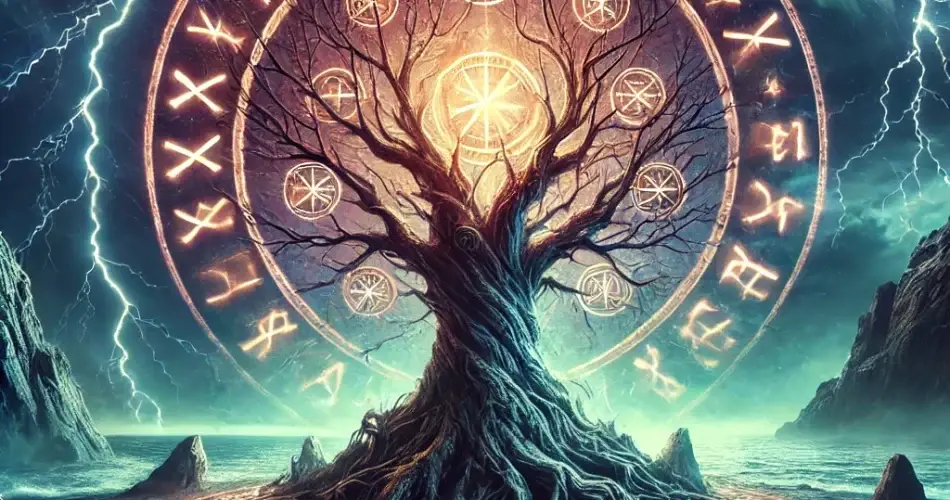The Vikings were not only fearsome warriors and explorers but also deeply spiritual people with a rich mythological tradition. They worshipped hundreds of supernatural beings and associated them with various signs and symbols.
These symbols served as powerful tools of protection, guidance, and spiritual connection for the Vikings. This post explores some of the most popular Viking symbols and their meanings.
1. Thor’s Hammer – Mjölnir
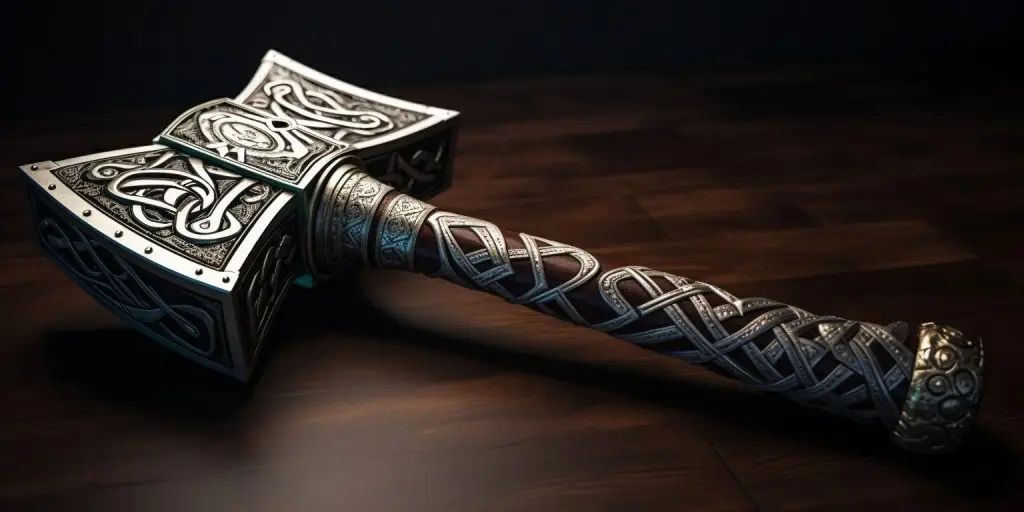
The iconic hammer of Thor is one of the most popular Viking symbols today. According to the Prose Edda, Mjölnir was crafted by the dwarven brothers Sindri and Brokkr. Despite a flaw in the hammer’s handle, Mjölnir became the most feared weapon in the Norse culture.
Mjölnir is a symbol of protection, strength, and consecration. For the Vikings, it was more than just a weapon; it was a divine instrument that maintained order in the universe.
Viking warriors often wore Mjölnir amulets, believing they would grant them Thor’s protection in battle and strength to overcome their enemies. Mjölnir was also used in rituals to bless marriages, births, and even crops, emphasizing its role in fostering life and safeguarding against harm.
2. The Tree of Life – Yggdrasil
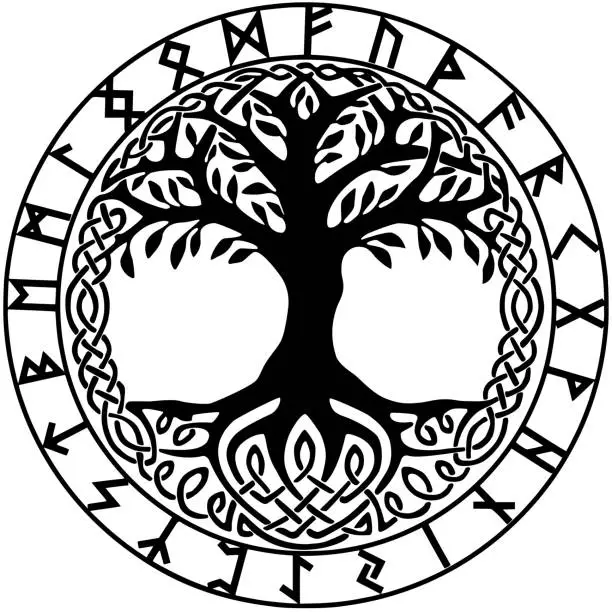
In the Norse Mythology, the Yggdrasil represents the World Tree that connects all nine realms of existence. It is an immense ash tree whose branches and roots stretch across the universe, linking worlds such as Asgard (the realm of the gods), Midgard (the human world), and Niflheim (the land of the dead).
The Tree is sustained by three wells: Urdarbrunnr, Mimisbrunnr, and Hvergelmir, each associated with wisdom, fate, and the primordial origins of life. The Norns, who control destiny, dwell by Yggdrasil and weave the fates of all beings, ensuring that everything in the cosmos is interconnected.
Yggdrasil embodies the concept of interconnectivity, the cycle of life, death, and rebirth, and the idea that all aspects of the universe are interwoven. For the Vikings, Yggdrasil was a symbol of the universe’s structure, representing the balance and harmony that maintained the cosmic order.
The Tree also symbolized resilience, as it continued to thrive despite the forces of chaos constantly gnawing at its roots.
3. The Viking Compass – Vegvisir
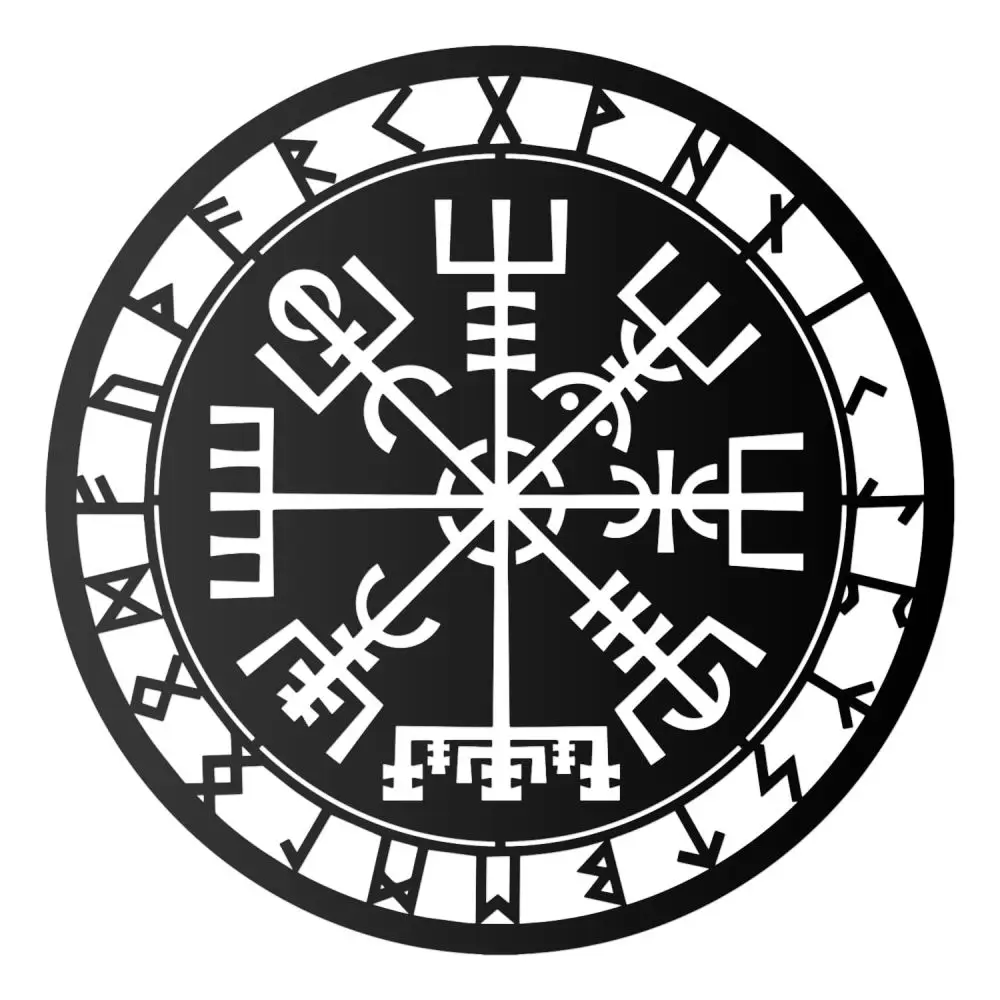
The Vegvisir, often referred to as the Viking compass, is a Norse symbol associated with guidance and protection during travel. Although it is not directly mentioned in ancient Norse texts, its roots are believed to be in Icelandic magic, specifically in the Huld Manuscript, a 19th-century collection of Icelandic spells and symbols.
The Vegvisir is more than just a navigational tool; it represents spiritual and physical guidance. For the Vikings, whose lives were deeply tied to the sea, this symbol was crucial for ensuring safe passage during their travels. According to Norse beliefs, anyone who carries the sign will never lose his way, no matter the circumstance,
4. The Knot of the Slain – Valknut
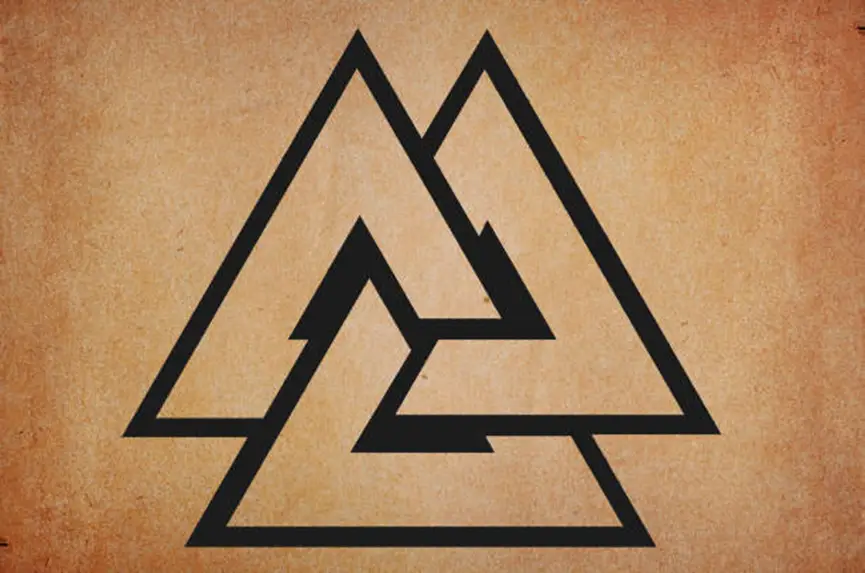
From the name, it is easy to see why this ancient Norse symbol is used to represent the afterlife. It is composed of three interlocking triangles and is closely associated with Odin, the chief of the Norse gods, who was also known as the god of the dead and the overseer of Valhalla. In ancient depictions, the Valknut often appears alongside scenes of warriors and burial rituals, suggesting its connection to death and the afterlife.
Its name, derived from the Old Norse words “valr” (slain warrior) and “knut” (knot), indicates its use as a symbol for those who have died honourably in battle. The Vikings believed the Valkyries took these warriors to Valhalla, where they would fight and feast until Ragnarok, the end of the world.
5. The Helm of Awe – Aegishjalmur
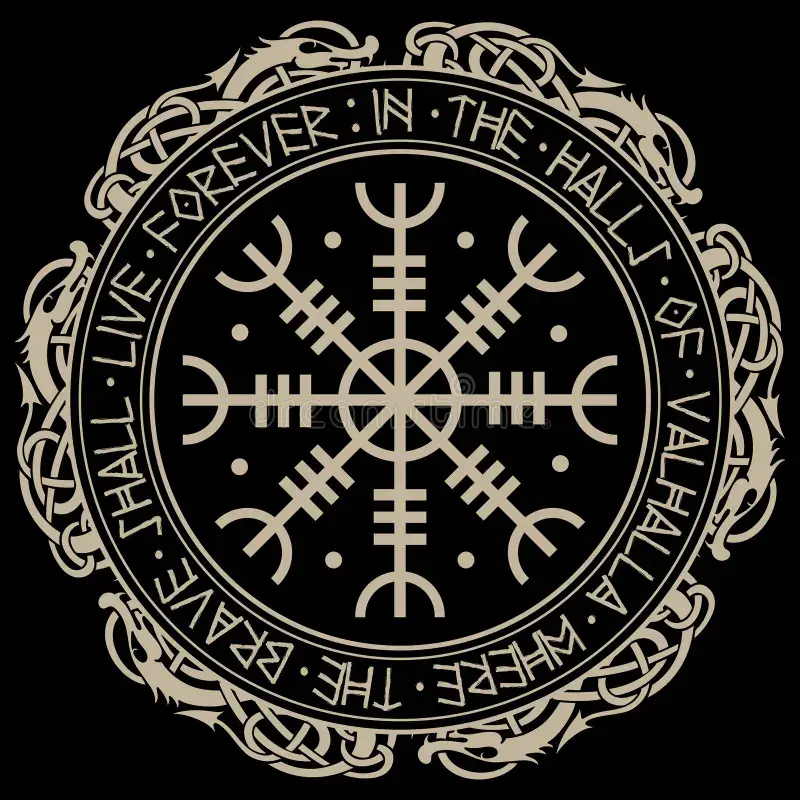
The Aegishjalmur, or Helm of Awe, is a magical symbol designed to instil fear and protect the wearer. It is frequently mentioned in Norse sagas.
The Aegishjalmur is a Norse symbol of protection, dominance, and the power to overwhelm one’s enemies. Vikings believed that wearing or inscribing this symbol could gain supernatural protection and force their enemies to flee. It was often etched onto helmets or shields before battle to ensure victory.
The Helm of Awe also represents the inner strength required to face overwhelming odds, reflecting the Viking ethos of courage and perseverance. In the 21st century, it is seen as a symbol of mental fortitude, the ability to stand strong against adversity, and the power to protect oneself from harm.
6. Odin’s Ravens – Huginn and Muninn
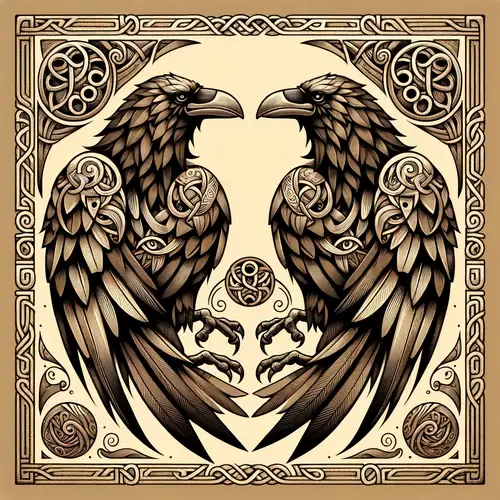
Huginn (thought) and Muninn (memory) are Odin’s two ravens, who fly across the world each day to gather knowledge and report back to their master. These ravens are integral to Odin’s role as a god of wisdom and war, providing him with information that helps him make decisions about the fates of gods and men. The ravens are also connected to the broader mythological theme of birds as messengers and symbols of insight in Norse culture.
Huginn and Muninn symbolize Odin’s omniscience and ability to perceive and understand the world’s complexities. They also serve as a reminder that wisdom comes from a balance of thought and experience and that one must constantly seek knowledge to navigate life successfully.
7. Odin’s Spear – Gungnir
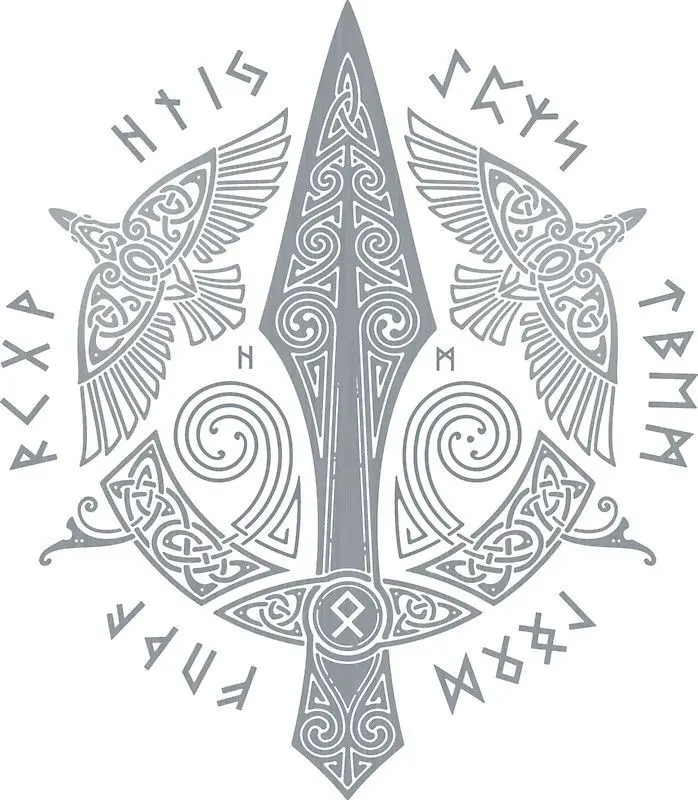
Gungnir, Odin’s spear, is a weapon of unparalleled precision and power. It was created by the skilled dwarven smiths known as the sons of Ivaldi. According to legend, Gungnir was so perfectly crafted that it could never miss its mark, regardless of the thrower’s skill. Odin used Gungnir in many of his mythological exploits, including during the final battle of Ragnarok.
Gungnir symbolizes authority, precision, and the inevitability of fate. As Odin’s weapon, it represents his power to influence and control the destinies of gods and men. The spear is also a symbol of the binding oaths and sacred laws that were central to Viking society, as Gungnir was often associated with the solemn promises Odin made.
8. The Triple Horn of Odin
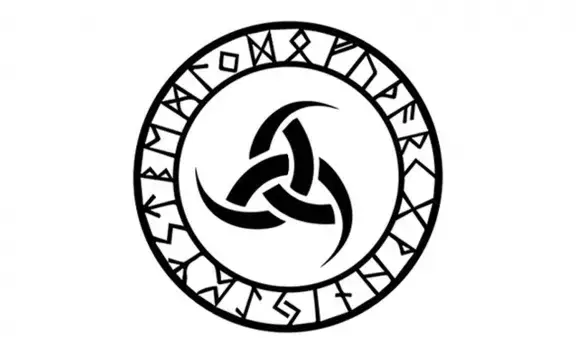
The Triple Horn of Odin consists of three interlocked drinking horns. It is a Norse symbol that is deeply connected to the god Odin and the story of his quest for the Mead of Poetry.
According to Norse mythology, the mead was a magical brew that gave the gift of poetry and wisdom to those who drank it. In his quest for wisdom, Odin deceived the giant Suttungr and stole the mead, drinking it from the three horns in three draughts. The Triple Horn thus became a symbol of Odin’s relentless pursuit of knowledge and the transformative power of wisdom.
For the Vikings, the Triple Horn was also a reminder of the importance of poetic and intellectual achievement, which were highly valued in their society. The symbol is closely associated with rituals of drinking and toasting, which were very important in Viking culture.
9. Odin’s Eight-Legged Horse – Sleipnir
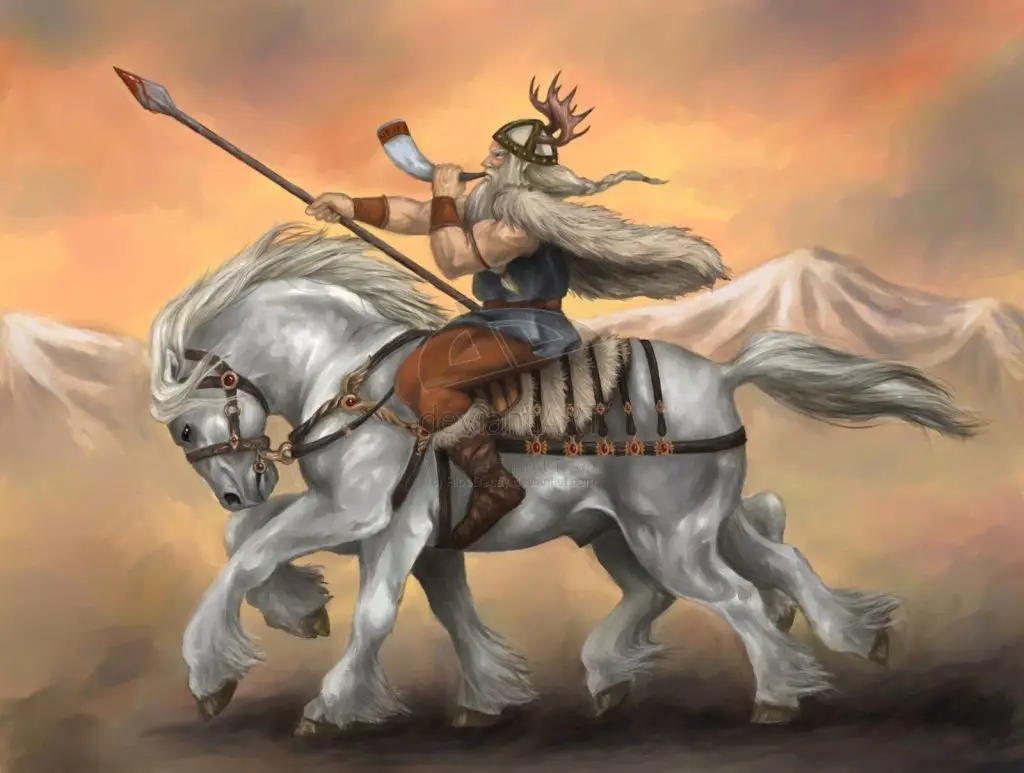
Sleipnir, the eight-legged horse of Odin, is a unique and powerful creature in Norse mythology. Born from the trickster god Loki, who had transformed into a mare to lure away a giant’s stallion, Sleipnir possessed unmatched speed and strength.
He could travel across the nine worlds, including journeys to the underworld, and was considered the best of all horses. Sleipnir is frequently depicted in mythological stories where Odin rides him into battle or on voyages across the cosmos.
Sleipnir’s eight legs are sometimes interpreted as a representation of the eight directions in Norse cosmology, emphasizing his ability to reach any part of the universe. For the Vikings, Sleipnir was also a symbol of Odin’s unparalleled power and role as a guide and protector in life and death.
10. The Web of Wyrd – Skuld’s Net
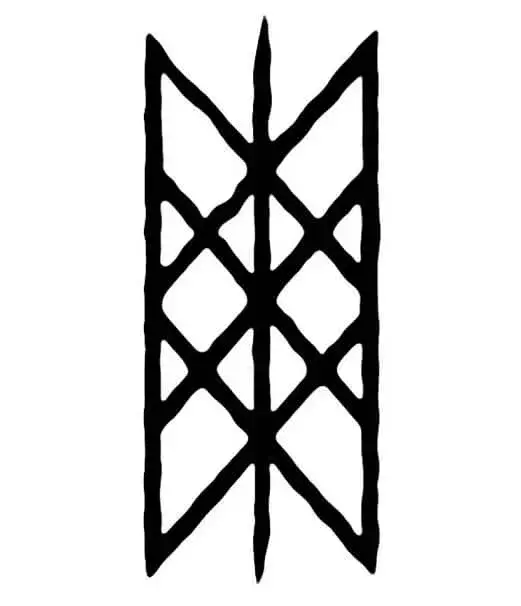
The Web of Wyrd, also known as Skuld’s Net, is a symbol made up of nine intersecting lines, representing the complex nature of fate in Norse mythology. The Norns, who were the keepers of fate, wove this web to determine the destinies of gods and men alike.
The Web of Wyrd is closely linked to the concept of time in Norse belief, where the past, present, and future are intertwined. This symbol is often seen as a visual representation of the Norse understanding of fate, where every action influences the course of history.
Do you know any other Norse symbols?
Let us know in the comments.
.
